In its 95-year history, Panasonic Corp. has grown into a consumer-electronics giant producing everything from TVs to eyelash curlers. New President Kazuhiro Tsuga is deciding what it can’t afford to make any more.
Next month, the head of the company that lost more than 1.3 trillion yen ($14.1 billion) since April 2011 will explain which products he wants consigned to Panasonic’s past. He plans to cut the number of business units by a third to focus on those offering the best profit margins, such as little-known operations like beauty appliances and welding machinery, rather than relying on lower-margin products like TVs and cell phones.
Panasonic booked a profit for the months of October through December after cutting 13,000 jobs, while Sony Corp. reported another loss under President Kazuo Hirai, also appointed last year. Having slid to the lowest levels since the mid-1970s last November, Panasonic’s stock rebounded to the highest price since April last year. Still, among the 20 analysts covering the company tracked by Bloomberg, 35 percent rate it buy, down from just below 50 percent when Tsuga took office in June.
After 33 years working in divisions across Panasonic, Tsuga may have the experience to deliver the kind of turnaround needed at Panasonic, a company that still expects to post a net loss of 765 billion yen this fiscal year and hasn’t generated free cash flow for eight quarters, said Fumiaki Sato, co-founder of Tokyo- based turnaround advisory firm Sangyo Sosei Advisory Inc.
“Tsuga-san’s advantage may be that he has broad understanding of electronics businesses and experiences in Panasonic’s various divisions,” said Sato.
If the company is to bolster its prospects, Sato and others say it needs to focus on business-to-business operations and high-margin home appliances that distinguish it from Sony, which sank to its eighth consecutive quarterly net loss in October- December amid sliding demand for its TVs.
Panasonic’s avionics and energy businesses offer examples of the kind of specialist products it can sell to corporate customers that can offer higher margins than mainstream consumer goods: in-flight entertainment systems for jets and energy- management systems for homes.
“Tsuga is trying to focus more on business-use products and smart-home products because that is the only way to go,” Sato said. “Panasonic has fuel-cell operations and other units enabling it to pursue a smart-home strategy. That is something Sony cannot do,” Sato said, referring to Sony’s focus of seeking to make big-volume hits out of consumer products like the PlayStation.
Sony has organized a PlayStation event for Feb. 20, stoking speculation it will announce the introduction of the fourth generation of its video-game console.
Surprise profit
Tsuga’s challenge comes with Japan’s broader technology industry in torpor. Sony and Sharp Corp. have seen losses pile up in recent years as their TVs, mobile phones and personal computers were eclipsed by hits from Apple Inc. and Samsung Electronics Co., just as the strong yen made Japanese exports even less competitive overseas.
Stock prices across the sector have tracked the Nikkei 225 higher in the past three months in response to the weakening of the yen versus the dollar. Panasonic got a further boost this month from the surprise October-December profit, leading investors to push the shares to their biggest one-day gain in almost 40 years.
Market value
Panasonic fell 3.7 percent to 675 yen as of 11:14 a.m. in Tokyo, trimming its gain this year to 29 percent. Sony fell 5 percent, partly because the yen stopped declining against the euro, said Hideki Yasuda, an analyst at Ace Securities Co. in Tokyo.
Panasonic’s stock remains anemic compared to its recent history. At current levels, like Sony, the company is worth less than a third of its market value at the end of June 2008, before shares sank around the globe in the financial crisis. Over the same period, the Nikkei index has dropped 16 percent, Apple shares have almost tripled in value, and Samsung Electronics stock has more than doubled.
Complicating matters for Tsuga is fallout from the acquisition of Osaka peer Sanyo Electric Co., completed in 2011. The deal, Panasonic’s biggest-ever buy at 936 billion yen, was designed to consolidate Panasonic’s position in businesses including rechargeable batteries and solar panels. Competition in those industries intensified significantly, prompting Panasonic to write down part of the cost of the deal.
Tsuga, 56, was picked to lead the company after a career that spanned its DVD and automotive electronics businesses, culminating in a spell heading up its TV operation. Six months after taking charge of the TV operation, he suspended operations at three factories, almost halving production capacity and using more panels from overseas companies for TV sets.
Restructuring costs
Booking 265 billion yen in restructuring charges, Panasonic said the change would improve earnings at the TV unit by 81 billion yen in the fiscal year ending in March. Panasonic doesn’t disclose losses from its TV operations, said Chieko Gyobu, a Tokyo-based spokeswoman.
Tsuga’s record at Panasonic’s TV unit has raised speculation that he may be able to move quickly to achieve the same thing on a bigger scale.
“Panasonic should go faster,” Tetsuro Ii, president of Commons Asset Management Inc. in Tokyo, said in a telephone interview. “Significant structural reforms haven’t occurred yet. The company should accelerate sales of unprofitable assets and divisions.”
Junk rating
Panasonic debt is rated junk by Fitch Ratings. The company has 180 billion yen in bonds that reach maturity this year.
Last October, Tsuga said he wanted to restructure Panasonic around four basic divisions, down from nine, with no more than 56 business units in total, down from 88.
That current disparate structure is a result of decades of investment in following new consumer product trends: From electric rice cookers in the 1950s, to VHS video recorders in the 1970s and notebook personal computers in the 1990s, Panasonic invested in covering trends set by others.
In his restructuring plan, Tsuga also said the maker of Viera TVs and Lumix cameras may consider pulling out of businesses with operating margins below 5 percent. Data reported by Panasonic on Feb. 1 showed that, among its main divisions, only the appliances business had an operating margin of more than 5 percent in the first nine months of the company’s current fiscal year.
Tsuga’s route to the top of Panasonic differs from Hirai’s path to Sony’s president. Born and raised in Osaka, Tsuga has a slew of patents to his credit after earning a degree in bioengineering from Osaka University and a master’s degree in computer science from the University of California at Santa Barbara.
‘Miserable’ rehearsal
Hirai, 52, was raised in the U.S. and Japan, and started in Sony’s music business before making his name as the head of its gaming unit, home of the PlayStation console.
Tsuga has been relaxed during public engagements at events like last month’s Consumer Electronics Show in Las Vegas, even poking fun at himself. In a televised interview on Panasonic’s Ustream channel, he described the first rehearsal for his CES address at home as “miserable,” and said his wife criticized his English for “not sounding like English at all.”
In a separate interview about the October IFA trade show in Berlin, Tsuga talked of his intention to transform Panasonic’s TV business and public perceptions about his company.
“In the U.S., maybe we are just treated as a TV maker, but we are not,” he said. “The TV was invented as a receiving device. But now it’s a display in the home. We must think, ‘How can we utilize it as part of a residential space?’”
Founder inspiration
Those who have worked with Tsuga, like Brendan Traw of Intel Corp., describe him as a leader who’s open to new ideas and frank discussion. Panasonic is among Intel’s biggest customers, according to estimates by Bloomberg, accounting for 2.4 percent of the chipmaker’s annual revenue.
Traw was previously chief technology officer for Intel’s digital home business. He and Tsuga held “hundreds of hours of meetings” in Los Angeles as they “worked on overdrive” to convince Hollywood executives that DVDs could fight piracy and generate new revenue streams.
Traw started working with Tsuga in the late 1990s, and their collaboration continued about a year ago during the development of a 20-inch tablet computer showcased at CES.
“Change is inevitable in technology, and the pace at which people, companies and the industry need to change is increasing,” said Traw, one of a group of executives named by Intel as Fellows for technical prowess. “Tsuga-san is an agent of that kind of change.”
Tsuga also seeks to draw lessons from the company’s most famous leader: founder Konosuke Matsushita. Tsuga is among a steady stream of Panasonic executives visiting exhibits at the Osaka museum dedicated to the industrialist, Assistant Director Yukitoshi Onda said. Employees seek inspiration from the story of the man who started the business at 23 making electrical plugs and sockets with his wife and brother.
“If I could see the founder,” Tsuga wrote in an article for the November edition of Japanese magazine Bungeishunju, “I’d wish to ask him whether he wanted Panasonic to become as enormous as the company is today,” adding: “I wonder how he’d start reform if he was in my position.”
(Bloomberg)
Next month, the head of the company that lost more than 1.3 trillion yen ($14.1 billion) since April 2011 will explain which products he wants consigned to Panasonic’s past. He plans to cut the number of business units by a third to focus on those offering the best profit margins, such as little-known operations like beauty appliances and welding machinery, rather than relying on lower-margin products like TVs and cell phones.
Panasonic booked a profit for the months of October through December after cutting 13,000 jobs, while Sony Corp. reported another loss under President Kazuo Hirai, also appointed last year. Having slid to the lowest levels since the mid-1970s last November, Panasonic’s stock rebounded to the highest price since April last year. Still, among the 20 analysts covering the company tracked by Bloomberg, 35 percent rate it buy, down from just below 50 percent when Tsuga took office in June.
After 33 years working in divisions across Panasonic, Tsuga may have the experience to deliver the kind of turnaround needed at Panasonic, a company that still expects to post a net loss of 765 billion yen this fiscal year and hasn’t generated free cash flow for eight quarters, said Fumiaki Sato, co-founder of Tokyo- based turnaround advisory firm Sangyo Sosei Advisory Inc.
“Tsuga-san’s advantage may be that he has broad understanding of electronics businesses and experiences in Panasonic’s various divisions,” said Sato.
If the company is to bolster its prospects, Sato and others say it needs to focus on business-to-business operations and high-margin home appliances that distinguish it from Sony, which sank to its eighth consecutive quarterly net loss in October- December amid sliding demand for its TVs.
Panasonic’s avionics and energy businesses offer examples of the kind of specialist products it can sell to corporate customers that can offer higher margins than mainstream consumer goods: in-flight entertainment systems for jets and energy- management systems for homes.
“Tsuga is trying to focus more on business-use products and smart-home products because that is the only way to go,” Sato said. “Panasonic has fuel-cell operations and other units enabling it to pursue a smart-home strategy. That is something Sony cannot do,” Sato said, referring to Sony’s focus of seeking to make big-volume hits out of consumer products like the PlayStation.
Sony has organized a PlayStation event for Feb. 20, stoking speculation it will announce the introduction of the fourth generation of its video-game console.
Surprise profit
Tsuga’s challenge comes with Japan’s broader technology industry in torpor. Sony and Sharp Corp. have seen losses pile up in recent years as their TVs, mobile phones and personal computers were eclipsed by hits from Apple Inc. and Samsung Electronics Co., just as the strong yen made Japanese exports even less competitive overseas.
Stock prices across the sector have tracked the Nikkei 225 higher in the past three months in response to the weakening of the yen versus the dollar. Panasonic got a further boost this month from the surprise October-December profit, leading investors to push the shares to their biggest one-day gain in almost 40 years.
Market value
Panasonic fell 3.7 percent to 675 yen as of 11:14 a.m. in Tokyo, trimming its gain this year to 29 percent. Sony fell 5 percent, partly because the yen stopped declining against the euro, said Hideki Yasuda, an analyst at Ace Securities Co. in Tokyo.
Panasonic’s stock remains anemic compared to its recent history. At current levels, like Sony, the company is worth less than a third of its market value at the end of June 2008, before shares sank around the globe in the financial crisis. Over the same period, the Nikkei index has dropped 16 percent, Apple shares have almost tripled in value, and Samsung Electronics stock has more than doubled.
Complicating matters for Tsuga is fallout from the acquisition of Osaka peer Sanyo Electric Co., completed in 2011. The deal, Panasonic’s biggest-ever buy at 936 billion yen, was designed to consolidate Panasonic’s position in businesses including rechargeable batteries and solar panels. Competition in those industries intensified significantly, prompting Panasonic to write down part of the cost of the deal.
Tsuga, 56, was picked to lead the company after a career that spanned its DVD and automotive electronics businesses, culminating in a spell heading up its TV operation. Six months after taking charge of the TV operation, he suspended operations at three factories, almost halving production capacity and using more panels from overseas companies for TV sets.
Restructuring costs
Booking 265 billion yen in restructuring charges, Panasonic said the change would improve earnings at the TV unit by 81 billion yen in the fiscal year ending in March. Panasonic doesn’t disclose losses from its TV operations, said Chieko Gyobu, a Tokyo-based spokeswoman.
Tsuga’s record at Panasonic’s TV unit has raised speculation that he may be able to move quickly to achieve the same thing on a bigger scale.
“Panasonic should go faster,” Tetsuro Ii, president of Commons Asset Management Inc. in Tokyo, said in a telephone interview. “Significant structural reforms haven’t occurred yet. The company should accelerate sales of unprofitable assets and divisions.”
Junk rating
Panasonic debt is rated junk by Fitch Ratings. The company has 180 billion yen in bonds that reach maturity this year.
Last October, Tsuga said he wanted to restructure Panasonic around four basic divisions, down from nine, with no more than 56 business units in total, down from 88.
That current disparate structure is a result of decades of investment in following new consumer product trends: From electric rice cookers in the 1950s, to VHS video recorders in the 1970s and notebook personal computers in the 1990s, Panasonic invested in covering trends set by others.
In his restructuring plan, Tsuga also said the maker of Viera TVs and Lumix cameras may consider pulling out of businesses with operating margins below 5 percent. Data reported by Panasonic on Feb. 1 showed that, among its main divisions, only the appliances business had an operating margin of more than 5 percent in the first nine months of the company’s current fiscal year.
Tsuga’s route to the top of Panasonic differs from Hirai’s path to Sony’s president. Born and raised in Osaka, Tsuga has a slew of patents to his credit after earning a degree in bioengineering from Osaka University and a master’s degree in computer science from the University of California at Santa Barbara.
‘Miserable’ rehearsal
Hirai, 52, was raised in the U.S. and Japan, and started in Sony’s music business before making his name as the head of its gaming unit, home of the PlayStation console.
Tsuga has been relaxed during public engagements at events like last month’s Consumer Electronics Show in Las Vegas, even poking fun at himself. In a televised interview on Panasonic’s Ustream channel, he described the first rehearsal for his CES address at home as “miserable,” and said his wife criticized his English for “not sounding like English at all.”
In a separate interview about the October IFA trade show in Berlin, Tsuga talked of his intention to transform Panasonic’s TV business and public perceptions about his company.
“In the U.S., maybe we are just treated as a TV maker, but we are not,” he said. “The TV was invented as a receiving device. But now it’s a display in the home. We must think, ‘How can we utilize it as part of a residential space?’”
Founder inspiration
Those who have worked with Tsuga, like Brendan Traw of Intel Corp., describe him as a leader who’s open to new ideas and frank discussion. Panasonic is among Intel’s biggest customers, according to estimates by Bloomberg, accounting for 2.4 percent of the chipmaker’s annual revenue.
Traw was previously chief technology officer for Intel’s digital home business. He and Tsuga held “hundreds of hours of meetings” in Los Angeles as they “worked on overdrive” to convince Hollywood executives that DVDs could fight piracy and generate new revenue streams.
Traw started working with Tsuga in the late 1990s, and their collaboration continued about a year ago during the development of a 20-inch tablet computer showcased at CES.
“Change is inevitable in technology, and the pace at which people, companies and the industry need to change is increasing,” said Traw, one of a group of executives named by Intel as Fellows for technical prowess. “Tsuga-san is an agent of that kind of change.”
Tsuga also seeks to draw lessons from the company’s most famous leader: founder Konosuke Matsushita. Tsuga is among a steady stream of Panasonic executives visiting exhibits at the Osaka museum dedicated to the industrialist, Assistant Director Yukitoshi Onda said. Employees seek inspiration from the story of the man who started the business at 23 making electrical plugs and sockets with his wife and brother.
“If I could see the founder,” Tsuga wrote in an article for the November edition of Japanese magazine Bungeishunju, “I’d wish to ask him whether he wanted Panasonic to become as enormous as the company is today,” adding: “I wonder how he’d start reform if he was in my position.”
(Bloomberg)
-
Articles by Korea Herald



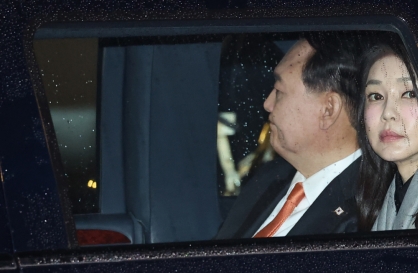

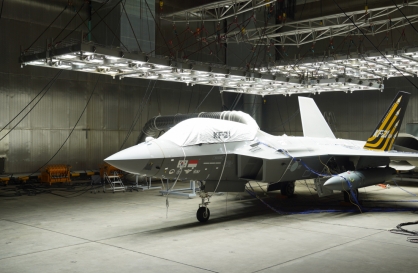
![[KH Explains] Can tech firms' AI alliances take on Nvidia?](http://res.heraldm.com/phpwas/restmb_idxmake.php?idx=644&simg=/content/image/2024/05/07/20240507050619_0.jpg&u=)
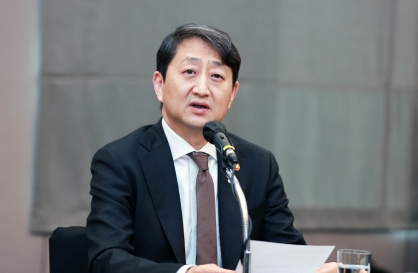
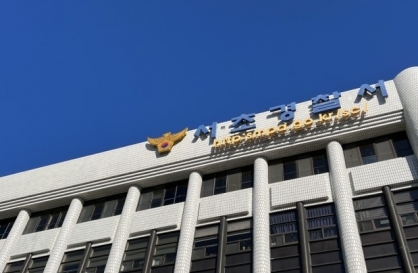


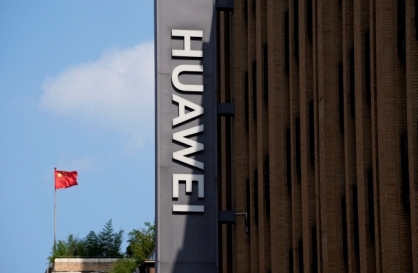



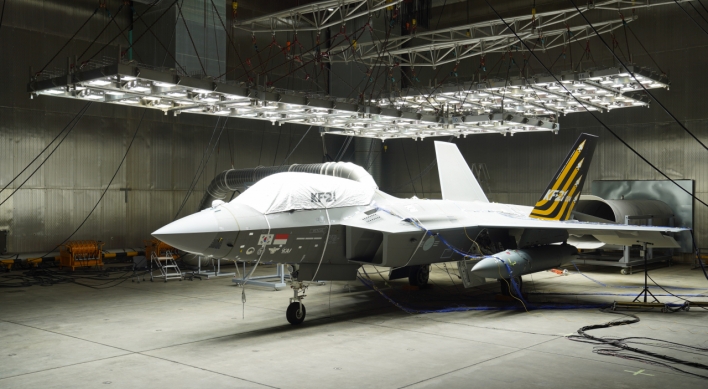
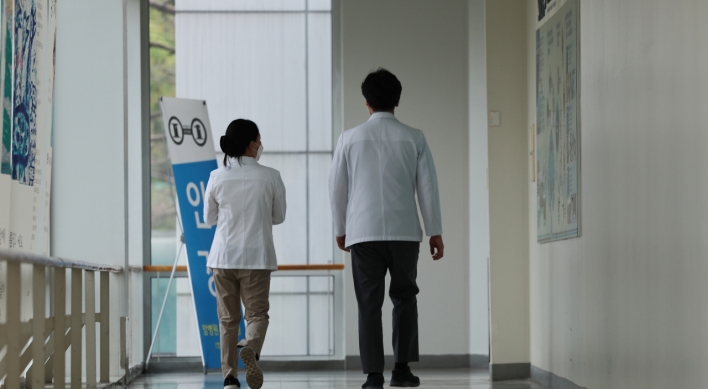

![[K-pop’s dilemma] Time, profit pressures work against originality](http://res.heraldm.com/phpwas/restmb_idxmake.php?idx=652&simg=/content/image/2024/05/08/20240508050705_0.jpg&u=20240508171126)
![[Today’s K-pop] NCT Dream to drop pre-release from 2nd Japan single](http://res.heraldm.com/phpwas/restmb_idxmake.php?idx=642&simg=/content/image/2024/05/08/20240508050725_0.jpg&u=)